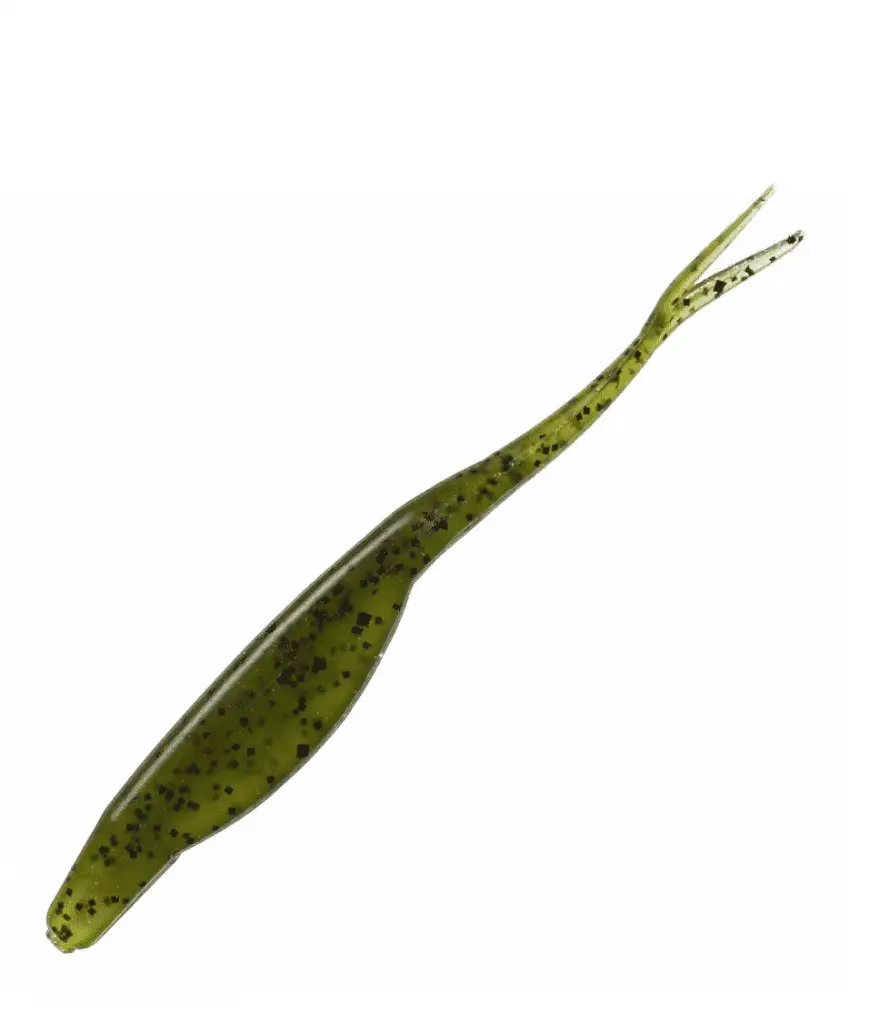Growing up in Florida, I was always fishing for largemouth bass. They put up a tough fight, and I’d occasionally land a giant. But after moving to Texas, I started to look more into fishing for trout and I was surprised to learn some of the differences.
While bass can put up more of a fight and are the stronger of the two gamefish, catching trout has its own challenges, namely–overcoming its elusive nature. Trout are more “line-shy” and bait-picky compared to bass, but both are still well-deserving of their popularity as gamefish.
Interested in finding out more about the differences between the two? Read on.
The main differences between bass and trout fishing
There are quite a few differences between the two fish, and you’ll often have to adjust your technique, rigs, and time of year depending on which one you’re targeting.
Here’s a quick and basic comparison of the two.
| Trout | Bass |
|---|---|
| Part of the salmon (and char) family | Bass is a sunfish |
| Can be tougher to catch | Can be less picky and easier to catch |
| Puts up less fight | Puts up more of a fight |
| Require more skill and technique | Requires less skill and technique |
| Best season is late spring | Best season is spring and fall |
| Requires a lighter hook | Requires a heavier hook |
| Best water temperature is 34-67ºF | Best water temperature is 55-70ºF |
| Has more bones in meat | Has less bones |
| Tastes better | Tastes good, but not as good as trout |
While trout are usually smaller (especially stocked trout), they can grow to weigh up to 8 pounds. On the other hand, largemouth bass can average 12 pounds with a maximum reported weight of 22 pounds.
Because of this, it’s not recommended to use the same setup for both fish. Trout can give you a good challenge, but if you’re using a heavier rod and reel, it won’t be as enjoyable. That’s why it’s recommended to invest in a light or ultralight rod and overall rig for trout.
Trout are also notorious for being pickier and more line-shy than bass, so the proper line-weight, leaders, and bait will help the rig blend in naturally. For example, using a fluorocarbon leader instead of monofilament can make a big difference in hiding the line from trout.
I’ve often caught bass by finding a hole in the lake and dropping just about any rig in. This usually won’t work for trout. You’ll likely want to bring several varieties of baits and lures to try while fishing for trout, compared to just a few options for bass.
Overall, eating trout is more popular than bass as they’re tastier, but they do have more bones. Bass also occasionally feed on the bottom, which like other bottom-feeders, can make for more of a murky-tasting meat.
The difference in hook sizes
Since largemouth bass have larger mouths (not surprisingly) and weigh more on average, you’ll often need a larger hook. A hook too small can bend or break. Believe me, I had this experience quite a few times when I was younger. A good hook size when fishing for largemouth bass is anywhere between sizes 4 to 6/0, while trout can vary from sizes 14 to 8.
Weather and location
When it comes to weather, both fish can be picky, although trout are far more sensitive. Trout can be caught in colder water and hang closer to the surface than bass. They mostly eat insects either right on the surface or just below it. Bass bite most often when they spawn in the warmer, shallower water of the lake. They’ll usually nest in the protected areas, so getting a rig that does well in the weeds is a good idea. On hot days, bass can still be caught, but they’ll often move to deeper water and often choose not to feed on these days.
Fishing techniques for trout and bass
When fishing for bass, your best bet is to identify areas that they’ll usually be spawning in. This could be shallow weeds, fallen trees, or manmade structures like docks. If you’re using a spinning reel, then spinnerbaits or worms are probably your best bet. I grew up using the Zoom 5″ Super Fluke and caught countless largemouth bass off it. Thread the hook through the top and then turn it around and tuck it into the wide part of the body. The hook should be hidden, which also means it’s weedless.

Dangle the bait off the bottom, and occasionally make a jigging motion. Bass go nuts and will hit this bait HARD. The best times to fish are early morning or twilight.
Trout also prefer using bushes, grass, stones, and holes as cover, but will often scout around looking for food. When throwing a lure, it’s more essential that you land it next to where the trout is feeding. They won’t be as aggressive or chase the lure as much as bass will. For best results, try using small spinners, or bait such as PowerBait, salmon eggs, corn, and even maggots (if you can stomach it).
Why trout fishing is so popular
There are a couple of theories why trout fishing has become so popular. First, trout are an elusive fish, making the hunt and skill needed all the more appealing. Second, trout are much more visible in the clear water, compared to other fish like bass. This makes stalking the fish possible, increasing the chances of getting them to hit the bait.
Which fish is more fun to catch
While both trout and bass are fun to catch, it all comes down to your preference. Do you want to land a heavier fish that puts up more of a fight? Or do you have the patience to test multiple lures and skills to land a trout?
Keep in mind the methods of fishing as well. With both trout and bass, you can catch them off the shore, docks, and boats. But trout give you more fishing options such as wading, fly fishing, and more.
Which is easier to catch
If we haven’t already covered it, most would agree that bass are the easier of the two to catch. With trout being line-shy and more sensitive to the presentation of bait and hooks, they can require more skill and patience than bass fishing.
Also, bass will often hit most kinds of bait and lures and their often murky water can help obscure lines better than the clear water you can normally find trout in.
Which fish tastes better
Overall, trout live in cleaner water and feed on the surface of the water, making their meat taste more fresh. Bass, while still good eating, sometimes feed on the bottom and can get that murky-taste similar to catfish and other bottom feeders. My experience with this was one of the ponds I used to fish on in Florida had some run-off which made a thick layer of muck that settled on the bottom. It was a stagnant pond and it often smelled like a sewer. It was fun to fish, but there’s no way I’d eat bass from it.
When it comes to bones, trout definitely have a more bone-to-meat ratio than bass but are still worth it because of the better taste.
If you’re looking at cleaning and cooking trout, check out this video by NorthAmericanFishing.
Bottom line on trout fishing vs bass fishing
The bottom line with fishing for trout compared to bass largely depends on what style of fishing you want and if you’re keeping the fish. If you want more of a challenge and a better-tasting fish, then definitely opt for trout fishing. If you’re looking for a larger catch and a more aggressive gamefish, bass fishing is the way to go.
